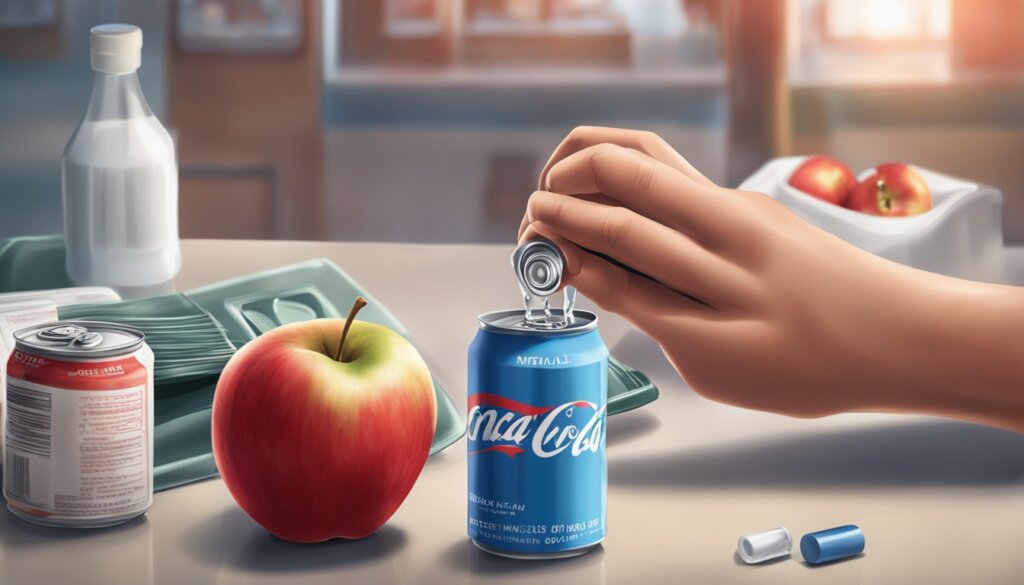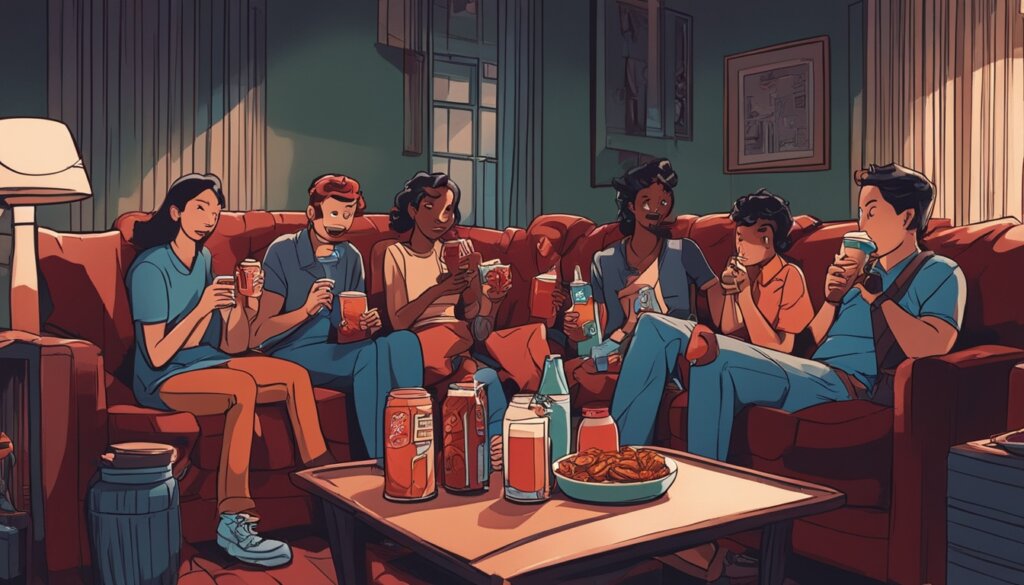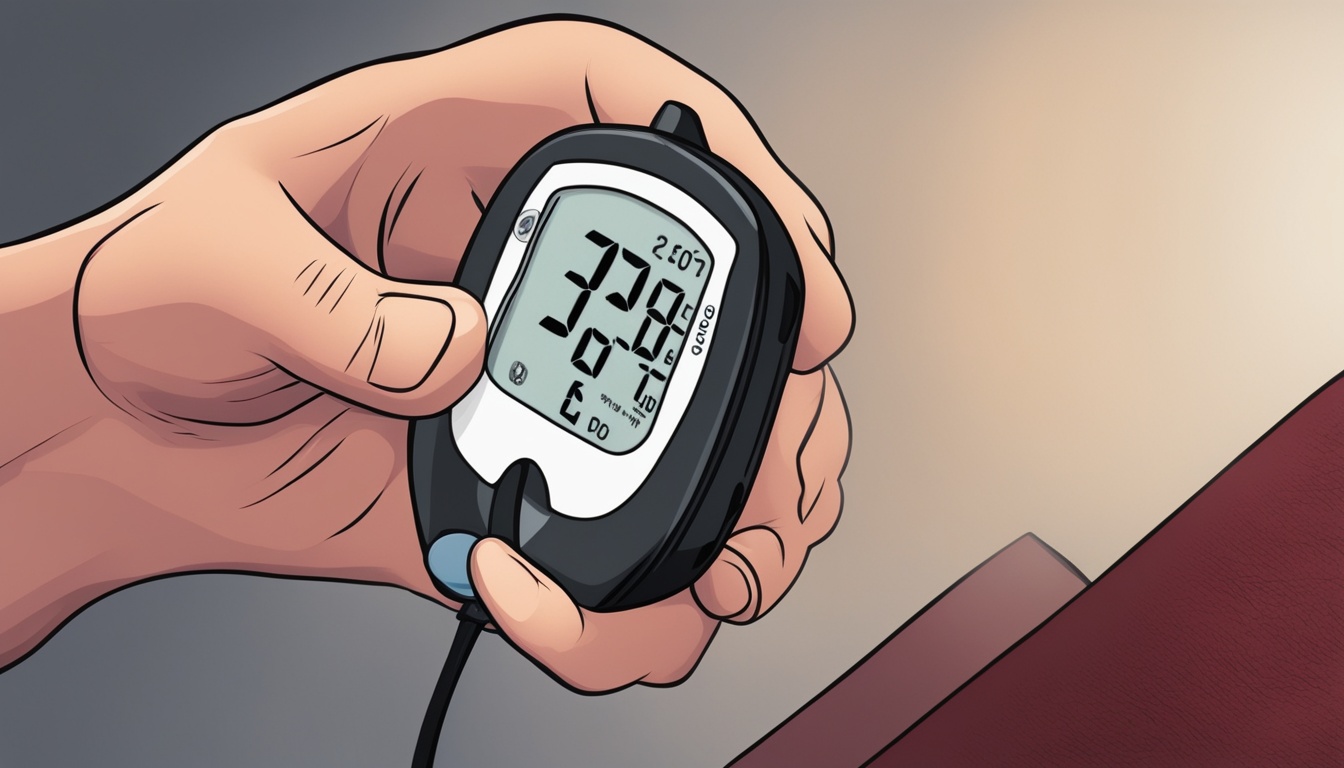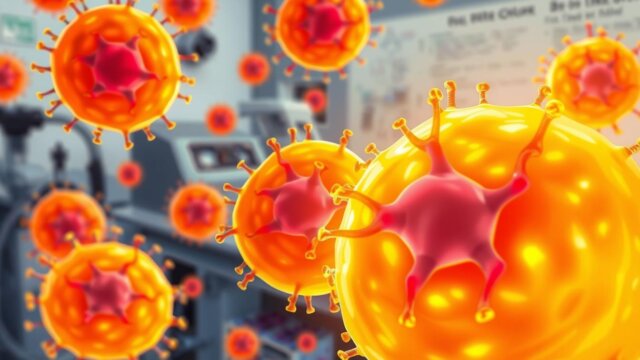FTC disclaimer: This post may contains affiliate links and we will be compensated if you click on a link and make a purchase.
Did you know many people don’t feel the effects of hyperglycemia until their blood sugar hits 250 mg/dL or more? This fact shows how vital it is to know and manage high blood sugar. It’s a big worry for those with type 1 and type 2 diabetes.
Hyperglycemia means too much glucose in the blood. If not treated, it can cause big health problems. So, it’s key to spot the early signs and act fast to keep blood sugar levels healthy.
Key Takeaways
- Hyperglycemia is a serious issue that can lead to diabetic ketoacidosis, a very dangerous condition.
- Many people don’t feel symptoms until their blood sugar is 250 mg/dL or higher. Those without diabetes might feel symptoms at lower levels.
- Insulin resistance is the main cause of type 2 diabetes, often linked to being overweight and lifestyle choices.
- Hyperglycemia can happen for many reasons, like certain medicines, stress, and problems with the pancreas.
- Spotting the early signs of high blood sugar, like being very thirsty and needing to pee a lot, is key to managing it well.
It’s vital to understand hyperglycemia’s causes, signs, and treatments for good health and to avoid serious issues. We’ll explore this topic more to help you manage your blood sugar levels.
Understanding Hyperglycemia
Hyperglycemia means there’s too much sugar in your blood. This happens when your body can’t make enough insulin or use it well. Insulin is key for controlling blood sugar levels by letting glucose into your cells for energy.
What is Hyperglycemia?
Hyperglycemia means your blood sugar is too high. It can be from not making enough insulin, like in type 1 diabetes. Or it can be from insulin not working right, like in type 2 diabetes.
Hyperglycemia vs. Hypoglycemia
Hypoglycemia is when your blood sugar goes too low. This can happen if insulin, food, and activity don’t balance out right. Normal blood sugar levels are between 60-140 mg/dl (3.3-7.8 mmol/l). If it’s over 7.8 mmol/l (140 mg/dl), you have high blood sugar or hyperglycemia. If it gets very low, it can be dangerous and you might need help right away.
“Monitoring blood glucose levels frequently is crucial for managing diabetes and detecting hyperglycemia early.”
It’s important to catch and manage both high and low blood sugar early. This keeps people with diabetes healthy and avoids serious problems.
Causes of High Blood Sugar (Hyperglycemia)
High blood sugar, or hyperglycemia, has many causes. It’s important to know what causes it to manage and prevent it. Let’s look at the main factors that raise glucose levels.
Insulin Resistance
Insulin resistance is a big cause of high blood sugar, especially in type 2 diabetes. When cells don’t respond to insulin, the hormone that controls blood sugar, the pancreas makes less insulin. This makes sugar build up in the blood, causing hyperglycemia.
Pancreas Issues
Problems with the pancreas, like autoimmune diseases, chronic pancreatitis, and pancreatic cancer, can cause high blood sugar. These issues make it hard for the pancreas to make enough insulin. This can lead to a serious condition called diabetic ketoacidosis (DKA).
Temporary Causes
Some things can cause high blood sugar for a short time. Being sick, stressed, or taking certain medicines can mess with how the body handles glucose. The dawn phenomenon, where blood sugar goes up in the morning, can also cause hyperglycemia in some people.
“Chronic inflammatory states induced by high glucose levels can lead to dysfunction in various parts of the immune system, affecting the immune response to infections.”
Knowing why hyperglycemia happens is key to managing and preventing it. By fixing the main problems, people can keep their blood sugar healthy and lower the risk of serious issues.
Symptoms of Hyperglycemia
Hyperglycemia, or high blood sugar, can cause many symptoms. These symptoms can start slowly over days or weeks. People with type 1 or 2 diabetes, or gestational diabetes might see these signs. Even those who are very sick, like after a stroke or heart attack, can have them.
Common signs include feeling very thirsty and needing to pee a lot, blurry vision, feeling very tired, and losing weight without trying. If not treated, hyperglycemia can lead to serious issues like bad breath that smells fruity, feeling sick, throwing up, and getting confused. This could mean a serious condition called diabetic ketoacidosis (DKA).
High blood sugar over time can harm the eyes, nerves, kidneys, and blood vessels. Things that can make blood sugar go up include stress, being sick, eating too much, not moving enough, not drinking enough water, missing your diabetes medicine, or taking some drugs like steroids.
Checking your blood sugar often and making healthy choices can help manage hyperglycemia. Signs you need urgent medical help include feeling or being very sick, stomach pain, breathing fast, signs of not having enough water, and trouble staying awake.
Following sick day rules, checking your blood sugar, and living a healthy life can lower the risk of having high blood sugar for a long time.
“Recognizing and addressing hyperglycemia symptoms early can help prevent serious complications and improve overall health.”
Early Signs of High Blood Sugar
It’s key to spot early signs of high blood sugar to manage it well. These signs show up when blood sugar goes above 180-200 mg/dL. Spotting them early lets you act fast to lower your blood sugar and avoid big problems.
Increased Thirst and Hunger
Feeling very thirsty and hungry is the first sign of high blood sugar. Your body tries to get rid of extra glucose by making more urine, which makes you thirsty. Also, high blood sugar makes your body use fat and muscle for energy, so you get hungrier.
Frequent Urination
Need to pee a lot is another sign of high blood sugar. Your kidneys work hard to remove extra glucose, making you pee more. This can mess up your sleep and daily life, especially at night.
Blurred Vision
High blood sugar can make your vision blurry. This happens because your eyes get fluid buildup from the sugar. It’s hard to do close-up tasks like reading or using a computer. Seeing blurry things is a sign your blood sugar is not under control.

Knowing these signs of high blood sugar helps you take steps to manage it. Exercise, meal plans for diabetes, and regular doctor visits can keep your blood sugar in check.
Long-Term Symptoms of Uncontrolled Hyperglycemia
If high blood sugar is not treated, it can cause serious problems over time. These issues include feeling very tired, losing weight without trying, and getting infections in the vagina and skin. You might also have trouble healing cuts and sores, and harm to your nerves, blood vessels, eyes, and kidneys.
High blood sugar can lead to serious diseases like heart disease, nerve damage, kidney problems, and eye issues. Keeping your blood sugar in check is key. People with normal blood sugar levels live better and have a better outlook on life.
- High blood sugar can lead to eye problems, potentially causing blindness.
- Foot sores and infections may need amputation.
- Nerve damage from diabetes can cause pain, burning, tingling, and erectile dysfunction in men.
- Kidney damage can lead to dialysis or a kidney transplant.
Managing high blood sugar is key to avoiding these serious problems and staying healthy. Regular checks, taking your medicine, and making healthy choices like eating right and exercising can help.
“Maintaining euglycemia, or normal blood sugar levels, is essential for individuals with hyperglycemia or diabetes to prevent long-term complications and improve their quality of life.”
Hyperglycemia in People Without Diabetes
Hyperglycemia, or high blood sugar, is not just for people with diabetes. It can happen to anyone. Glucose levels are kept in check by insulin. High blood sugar means levels are over 125 mg/dL after fasting or over 180 mg/dL one to two hours after eating.
Conditions like Cushing’s syndrome, PCOS, and pancreatic diseases can make the body produce too much glucose or not use insulin well. This leads to high blood sugar.
Stress or some medicines can also cause high blood sugar in people without diabetes. This can happen suddenly with a big illness or injury. Or, it can be a long-term issue with chronic diseases.
Being at risk of high blood sugar without diabetes includes having conditions like Cushing syndrome, going through surgery, getting infections, taking certain medicines, or having a family history of diabetes.
- About 10% to 30% of people with Cushing’s syndrome may have trouble controlling their blood sugar, and 40% to 45% might get diabetes.
- Up to 30% of people can get high blood sugar after surgery, and it can stay high even after they leave the hospital.
- People with PCOS often have insulin resistance, which means they have too much glucose in their blood.
- Patients in the hospital getting IV nutrition can get high blood sugar from sugar solutions. These need to be watched to avoid spikes.
Being overweight, eating too much sugar or carbs, and drinking alcohol can also lead to high blood sugar in people without diabetes. Being overweight can make inflammation and insulin resistance worse, raising blood sugar levels. Too much sugar and carbs, and drinking alcohol, can mess with how the body controls blood sugar.

If you’re worried about your blood sugar or think you might be at risk, talk to a healthcare professional. They can check you out and help you manage it. Quick action and making healthy changes can stop serious problems from happening, even if you don’t have diabetes.
The Dawn Phenomenon
The dawn phenomenon is a common issue for people with diabetes. It’s when blood sugar levels go up in the early morning, usually from 4 AM to 8 AM. This happens because of hormones released at night, like growth hormone and cortisol. These hormones make insulin less effective and raise blood sugar.
High blood sugar in the morning can come from not taking enough insulin, wrong diabetes medicine doses, or eating carbs before bed. Doctors might suggest checking blood sugar early in the morning for a few days. They might also recommend using continuous glucose monitors to spot the dawn phenomenon.
To fix the dawn phenomenon, doctors might change your diabetes medicine. They might suggest taking your medicine at different times or using an insulin pump for more insulin in the morning. Eating well and exercising in the evening can also help keep your blood sugar stable in the morning.
Many people with diabetes, over 50%, experience the dawn phenomenon. It can make managing your diabetes harder and raise your HbA1c levels by 0.4% in type 2 diabetes. Using insulin carefully and considering the dawn phenomenon can prevent low blood sugar at night and morning highs.
Checking your blood sugar often and knowing how it changes can help manage the dawn phenomenon. Morning exercise is also good for keeping your blood sugar in check if you have this issue.
“The dawn phenomenon is a common and significant challenge for individuals with diabetes, but with the right management strategies, it can be effectively addressed.”
Risk Factors for Hyperglycemia
Hyperglycemia, or high blood sugar, has many causes. Knowing what increases the risk is key for prevention and early action. Important risk factors for hyperglycemia include:
Lack of Insulin or Diabetes Medications
Not using insulin or diabetes drugs can cause blood sugar to go up. It’s vital to stick to a good treatment plan to keep hyperglycemia under control.
Illness or Stress
Sickness, infections, and stress can make insulin resistance worse and raise blood sugar. Keeping an eye on blood sugar and getting medical help quickly when sick or stressed helps manage hyperglycemia.
Certain Medications
Some drugs, like steroids and immunosuppressants, can cause high blood sugar. People taking these should watch their blood sugar closely and talk to their doctor to manage it.
Knowing these risk factors helps people take steps to prevent or manage hyperglycemia. This keeps blood sugar levels healthy.

Complications of Untreated Hyperglycemia
Not treating high blood sugar can lead to serious problems. These issues can be long-term and even life-threatening. Hyperglycemia complications are very serious and can harm your health.
Long-Term Complications
High blood sugar over time can cause many long-term problems. These include eye issues like diabetic retinopathy, nerve damage (neuropathy), kidney disease, and heart problems like high blood pressure and heart attacks and strokes. Diabetes can also cause foot problems that might lead to losing a limb if not treated. It can increase the risk of some cancers and affect sexual health in both men and women.
Emergency Complications
High blood sugar without insulin can cause serious emergencies. These include diabetic ketoacidosis (DKA) and hyperosmolar hyperglycemic state (HHS). These conditions lead to severe dehydration, confusion, and coma if not treated quickly. Without quick medical help, these issues can be deadly.
Things like poor HbA1c control, high blood pressure, smoking, and high cholesterol can lead to hyperglycemia problems. Keeping HbA1c levels in check and living a healthy life can lower the risk of these issues.
If you have diabetes, it’s key to watch your blood sugar, follow your treatment, and get medical help fast if you see signs of hyperglycemia or its problems. With good management and quick action, many of these issues can be avoided or delayed.
Diabetic Ketoacidosis (DKA)
Diabetic ketoacidosis (DKA) is a serious condition that can happen when you have high blood sugar. This happens when there’s not enough insulin. Without insulin, your body starts to break down fat for fuel, making toxic acids called ketones. These acids make your blood too acidic, causing symptoms like nausea, vomiting, and confusion.
DKA is a medical emergency that needs quick action to stop coma and death. It can happen when you don’t have enough insulin and your body makes too many counter-regulatory hormones. This leads to more ketones in your blood.
DKA also makes you very thirsty and lose a lot of electrolytes like potassium. Getting DKA treated quickly is key to avoiding serious problems.
- Back in the 1980s, DKA was rare, but now there are about 220,340 cases in the US each year.
- DKA mostly happens in people with type 1 diabetes, but type 2 diabetes patients can get it too, especially when stressed or sick.
- If you have high blood sugar and signs of DKA, you need to get emergency help fast.
Keeping your diabetes in check by monitoring your blood sugar and ketones can prevent DKA. Catching DKA early and treating it right is key to getting better.
Hyperosmolar Hyperglycemic State
Hyperosmolar hyperglycemic state (HHS) is a serious issue from high blood sugar. It’s different from diabetic ketoacidosis (DKA) because the body makes some insulin but not enough. This results in blood sugar over 600 mg/dL without ketones.
HHS can make you very dehydrated, confused, and even lead to coma if not treated fast. People with HHS can lose up to 9 L of water because of high sugar and more water loss. The body tries to hold onto water by releasing a hormone, but this can make dehydration worse.
HHS is very dangerous and needs quick medical help. From 1997 to 2009, cases of HHS went up by 52.4% in kids. It can be deadly, with death rates between 10% to 50%, and even 1.2% to 9% for DKA. Kids with HHS face a 60% chance of dying.
Quick action with fluids, insulin, and electrolytes is key to treating HHS. If HHS causes low blood pressure, it can shut down the kidneys and harm tissues. High sugar levels can lead to coma, big changes in electrolytes, and low blood pressure.
Condition | Mortality Rate |
|---|---|
Hyperosmolar Hyperglycemic State (HHS) | 10% to 50% |
Diabetic Ketoacidosis (DKA) | 1.2% to 9% |
Knowing the signs of HHS and getting help fast is key to avoiding serious problems. Most HHS cases start with an infection, often pneumonia. Not taking diabetes medicine right can also cause HHS in 21% of cases.
HHS is a medical emergency that needs quick action. It’s important to know about its causes, signs, and treatment for those with diabetes or at risk.
Preventing and Managing Hyperglycemia
Keeping blood sugar levels healthy is key for people with diabetes. To stop and control high blood sugar, a detailed plan is needed. This plan includes eating right, checking blood sugar often, and adjusting medicines as needed.
Following a Diabetes Meal Plan
Eating the right carbs is important to prevent high blood sugar. The American Diabetes Association suggests blood sugar levels should be between 80-130 mg/dL before meals. After eating, levels should be under 180 mg/dL. Following a diabetes meal plan helps keep blood sugar in check.
Monitoring Blood Sugar
Checking blood sugar often is key to managing high blood sugar. The Mayo Clinic says to aim for levels of 80-120 mg/dL before meals for younger people with diabetes. For older adults or those with other health issues, aim for 100-140 mg/dL. Checking blood sugar at specific times helps guide treatment changes.
Adjusting Medication
Managing diabetes medicines, like insulin, is vital for good blood sugar levels. The American Diabetes Association wants an HbA1C of 7% or less for good control. If HbA1C is over 7%, treatment might need to change. Working with a healthcare provider to adjust medicines can prevent high blood sugar.

By eating right, checking blood sugar, and adjusting medicines, people with diabetes can manage high blood sugar. This helps avoid long-term problems and keeps them healthy.
When to Seek Medical Attention
If you have severe or ongoing high blood sugar symptoms, get medical help fast. Go to the hospital if your blood sugar keeps going over 240 mg/dL and you feel sick, like you’re going to throw up, have diarrhea, feel dizzy, or confused. High blood sugar over 400 mg/dL is very serious and can cause a dangerous condition called diabetic ketoacidosis or hyperosmolar hyperglycemic state.
Getting help quickly is key when your blood sugar is too high to avoid serious problems. In the hospital, doctors might use special devices to watch your blood sugar closely. They will give you insulin, fluids, and help with electrolytes to treat your high blood sugar.
It’s a good idea to bring your own blood glucose meter, diabetes meds, insulin pump, and medical history to the hospital. Also, have your diabetes care team’s contact info handy to help with your treatment. Patient advocates can help you get through the hospital process and make sure they take care of you.
Don’t wait to get medical help for severe or ongoing high blood sugar. It’s very important to avoid serious health risks. By acting fast and talking with your doctors, you can manage your high blood sugar and stay healthy.
Conclusion
Hyperglycemia, or high blood sugar, is a big problem for many people around the world. In the U.S., over 34.2 million people have diabetes, which often leads to high blood sugar. This can cause many health problems, like getting sick more easily and heart rhythm issues. It can even lead to serious conditions like diabetic cardiomyopathy.
Knowing about hyperglycemia helps people manage their blood sugar. This means checking blood sugar often, eating right, and taking your medicine as told. With the help of doctors, people with high blood sugar can stay healthy and live better.
Winning against hyperglycemia is all about being aware and taking care of yourself. By facing this issue, you can live a better life without the problems of high blood sugar.
FAQ
What is hyperglycemia?
Hyperglycemia means there’s too much glucose in your blood. It’s a big worry for those with type 1 and type 2 diabetes.
What is the difference between hyperglycemia and hypoglycemia?
Hyperglycemia is high blood sugar. Hypoglycemia is low blood sugar. It happens when insulin, food, and activity don’t balance right.
What are the common causes of hyperglycemia?
It can come from insulin resistance, pancreas problems, or short-term things like sickness, stress, and some drugs.
What are the symptoms of hyperglycemia?
Signs include feeling thirsty and peeing a lot, blurry vision, feeling tired, and losing weight.
What are the early signs of high blood sugar?
Early signs are feeling thirsty and hungry, peeing a lot, and blurry vision.
What are the long-term symptoms of uncontrolled hyperglycemia?
Long-term effects include feeling tired, losing weight, getting infections, and having slow-healing cuts and sores. It can also harm nerves, blood vessels, eyes, and kidneys.
Can people without diabetes experience hyperglycemia?
Yes, some medical conditions and short-term factors like stress or certain drugs can cause high blood sugar in non-diabetics.
What is the dawn phenomenon?
The dawn phenomenon is when blood sugar goes up in the early morning. It’s due to certain hormones released overnight.
What are some risk factors for developing hyperglycemia?
Risk factors include not using enough insulin or diabetes meds, being sick, stressed, or on certain drugs.
What are the potential complications of untreated hyperglycemia?
Not treating hyperglycemia can lead to serious problems like heart disease, nerve damage, eye issues, and emergencies like diabetic ketoacidosis and hyperosmolar hyperglycemic state.
What is diabetic ketoacidosis (DKA)?
Diabetic ketoacidosis is a serious condition where the body can’t use glucose for energy. This leads to a buildup of toxic acids called ketones.
What is hyperosmolar hyperglycemic state (HHS)?
Hyperosmolar hyperglycemic state is a severe condition where the body makes some insulin but not enough to control blood sugar. This leads to very high blood sugar without ketones.
How can I prevent and manage hyperglycemia?
To prevent and manage hyperglycemia, follow a balanced meal plan, check your blood sugar often, and adjust your diabetes meds as needed.
When should I seek medical attention for hyperglycemia?
Get help right away if you have severe or ongoing hyperglycemia symptoms. This includes vomiting or diarrhea, blood sugar over 240 mg/dL, or signs of diabetic ketoacidosis or hyperosmolar hyperglycemic state.








